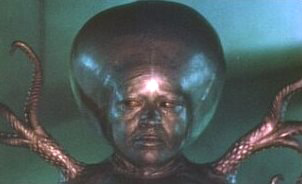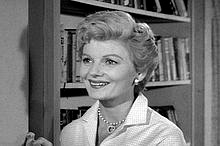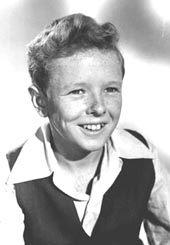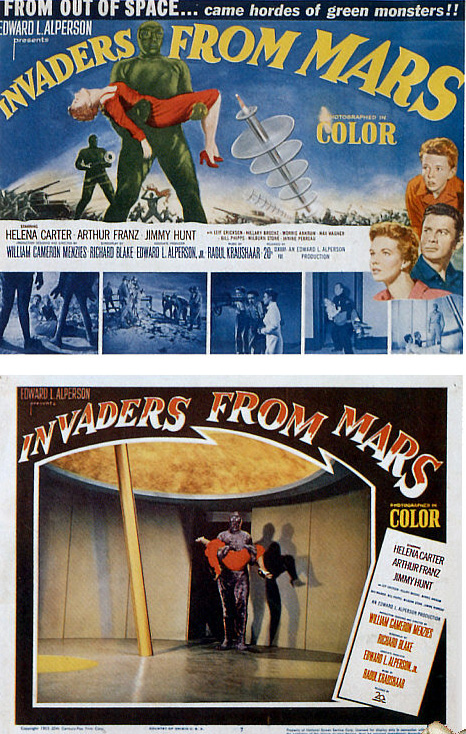The Crawling Eye
War of the Worlds
The Day The Earth Stood Still
The Thing From Another World
Invasion of the Body Snatchers
Earth VS. the Flying Saucers
Teenagers From Outer Space
I Married A Monster From Outer Space
The Beast From 20,000 Fathoms
The Incredible Shrinking Man
The Blob
Invaders From Mars
Forbidden Planet
It! The Terror From Beyond Space
The Monster That Challenged the World
When Worlds Collide
Attack of the 50 Ft. Woman
The Amazing Colossal Man
Them!
This Island Earth
Creature From the Black Lagoon
The World, the Flesh, and the Devil
Rocketship XM
Destination Moon
20,000 Leagues Under the Sea
20 Million Miles to Earth
The Giant Behemoth
The Fly
The Time Machine
The Angry Red Planet
The Man From Planet X
Flight to Mars
The Wasp Woman
Journey to the Center of the Earth
Invisible Invaders
The Magnetic Monster
Terror From the Year 5000
 Invaders From Mars
Invaders From Mars
Year: 1953
Cast: Helena Carter as Dr. Pat Blake, MD
Arthur Franz as Dr. Stuart Kelston
Jimmy Hunt as David Maclean Hillary Brooke as Mary MacLean Leif Erickson as George MacLean Length: color- 78 minutes
Budget: $290,000
Director: William Cameron Menzies
Music: Roul Kraushaar
Distributed By: Twentieth Century Fox Film Corp.
Interesting Tidbits
Invaders From Mars came about as the result of a dream. Writer John Tucker Battle's wife, Rosemary, experienced a frightening nightmare when she was a child. In it, she ran to her mother who turns out not to have been her mother.
With just that undetailed story, John Battle built it up into a science fiction story in which Martians land in a sand pit. They capture key unaware humans turning them into cold, calculating machines.
 Barbara Billingsley, best known for her role in television's Leave It To Beaver as June Cleaver, makes a brief, uncredited appearance. She plays Dr. Kelston's secretary.
Barbara Billingsley, best known for her role in television's Leave It To Beaver as June Cleaver, makes a brief, uncredited appearance. She plays Dr. Kelston's secretary.
The part of David MacLean was played by 14 year old Jimmy Hunt. He was born in Los Angeles, California in 1939.
William Cameron Menzies was hired to work on the production. He won an oscar for Best Art Director in 1939 for the hugely successful motion picture Gone With The Wind. He also directed the 1936 sci-fic classic Things to Come.
It was Menzies who pioneered the use of storyboards to communicate in detail a movie's storyline. Highly regarded and used today, Menzies first used this device in the silent era.
He laid out the entire story drawn in charcoal in twelve notebooks.
Two of the Martian mutants were portrayed by physical giants. One was Lock Martin who stood 7'7" tall. He portrayed Gork in the hugely successful sci-fi movie The Day the Earth Stood Still. The other mutant was portrayed by 8'6" Max Palmer, then "the tallest man on earth."
Invaders From Mars was made on a shoestring budget. That means a lot of corners had to be cut. Having a limited budget forces the imagination to go into overdrive to get an effect.
The special efects team manufactured the melting cave walls by boiling a tub of oatmeal colored red with dye. Red lights were used to light it and it was shot from above. The effect was convincing and looked great - at least to me it did.
 The sand pit which captured the human victims was very ingenious. It was the work of Theodore Lydecker. He slit a piece of heavy canvas and placed in it a large funnel. A hose from a powerful vacuum was attached to the funnel and the entire pice covered with sand.
The sand pit which captured the human victims was very ingenious. It was the work of Theodore Lydecker. He slit a piece of heavy canvas and placed in it a large funnel. A hose from a powerful vacuum was attached to the funnel and the entire pice covered with sand.
When the cameras rolled, the vacuum was turned on and san sucked in which gave the desired result. In order to make the pit appear to close, the film was run backwards.
Shooting of the film began on September 25, 1952. The grassy area and the path leading up to the sand pit was one of two of the larger sets. The other was the interior of the spaceship. These sets were built on soundstages.

The Plot
One night, a small boy, David MacLean (Jimmy Hunt), sees a flying saucer land near his home. His scientist father (Leif Erickson) goes to investigate. When he returns, there is an unusual mark on the back of his neck and he behaves in a different, cold and hostile manner. Gradually, David realizes that there is a conspiracy in which the people of the town are one by one becoming cold and inhuman.
With the help of a local astronomer Dr. Stuart Kelston (Arthur Franz) and health-department physician Dr. Pat Blake (Helena Carter), he learns that the flying saucer, that has buried itself in a sandpit just behind his home, is the vanguard of an invasion from Mars. The Army is contacted and convinced to investigate, leading to a military penetration of the underground hideout established by the Martians. The troops enter the saucer. Inside they find a Martian, mostly a large head with strange tentacles, encased in a glassy sphere. The Martian mastermind is served by tall, green, silent humanoid "mutants", who use cerebral implants to control the townsfolk in order to sabotage nuclear rocket experiments at a facility just outside of town.
In the film's climax, the Army, scientists, and David flee from the sandpit as explosives hidden aboard the flying saucer count down their last remaining seconds. An excessively long sequence montage's David running downhill, with flashbacks of the events of the film, supposedly running through David's mind. This includes some sequences played backwards, as well as scenes and events at which David was not present, of which he thus, could have had no knowledge. This is inter-cut with shots of the explosive timer counting down. Following the explosion, David is back in his bed, awakened by thunder, as he was at the beginning of the film. His parents reassure him by telling him the whole thing was just a nightmare, sending him back to bed. As thunder wakes him again, he witnesses the same UFO slowly land at the sandpit near his house. Is this another dream, or was the first a premonition of a now real event?
The film was shot from the point of view of a child. Camera angles are lower than usual. The set design of the police station consists of stark, elongated structures stretching high above the boy's head, much as it would appear to a child shorter than an adult.
Source: Wikipedia.org
